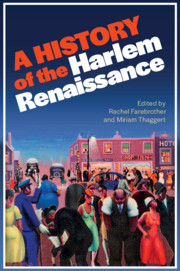Book contents
- A History of the Harlem Renaissance
- A History of the Harlem Renaissance
- Copyright page
- Dedication
- Contents
- Illustrations
- Contributors
- Acknowledgments
- Introduction: Revising a Renaissance
- Part I Re-reading the New Negro
- Part II Experimenting with the New Negro
- Part III Re-mapping the New Negro
- Part IV Performing the New Negro
- Bibliography
- Index
- References
Bibliography
Published online by Cambridge University Press: 20 January 2021
- A History of the Harlem Renaissance
- A History of the Harlem Renaissance
- Copyright page
- Dedication
- Contents
- Illustrations
- Contributors
- Acknowledgments
- Introduction: Revising a Renaissance
- Part I Re-reading the New Negro
- Part II Experimenting with the New Negro
- Part III Re-mapping the New Negro
- Part IV Performing the New Negro
- Bibliography
- Index
- References
Summary

- Type
- Chapter
- Information
- A History of the Harlem Renaissance , pp. 394 - 423Publisher: Cambridge University PressPrint publication year: 2021

